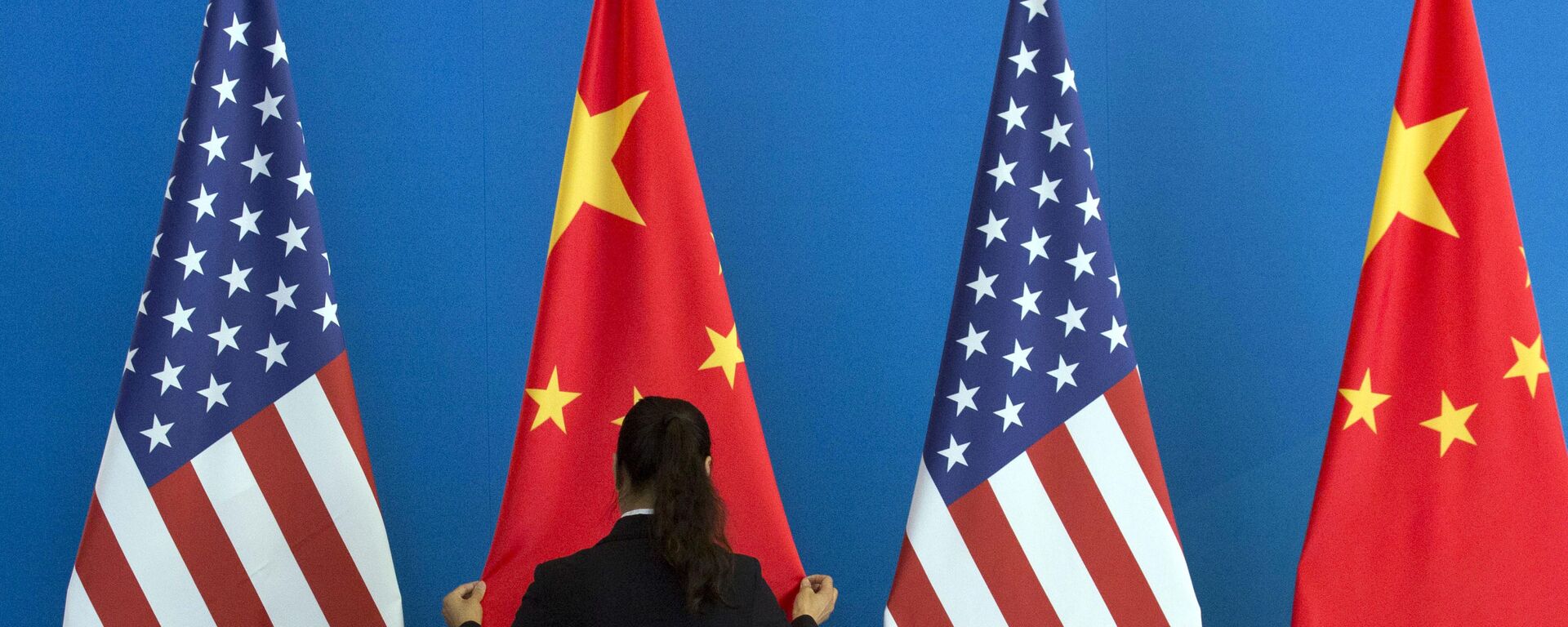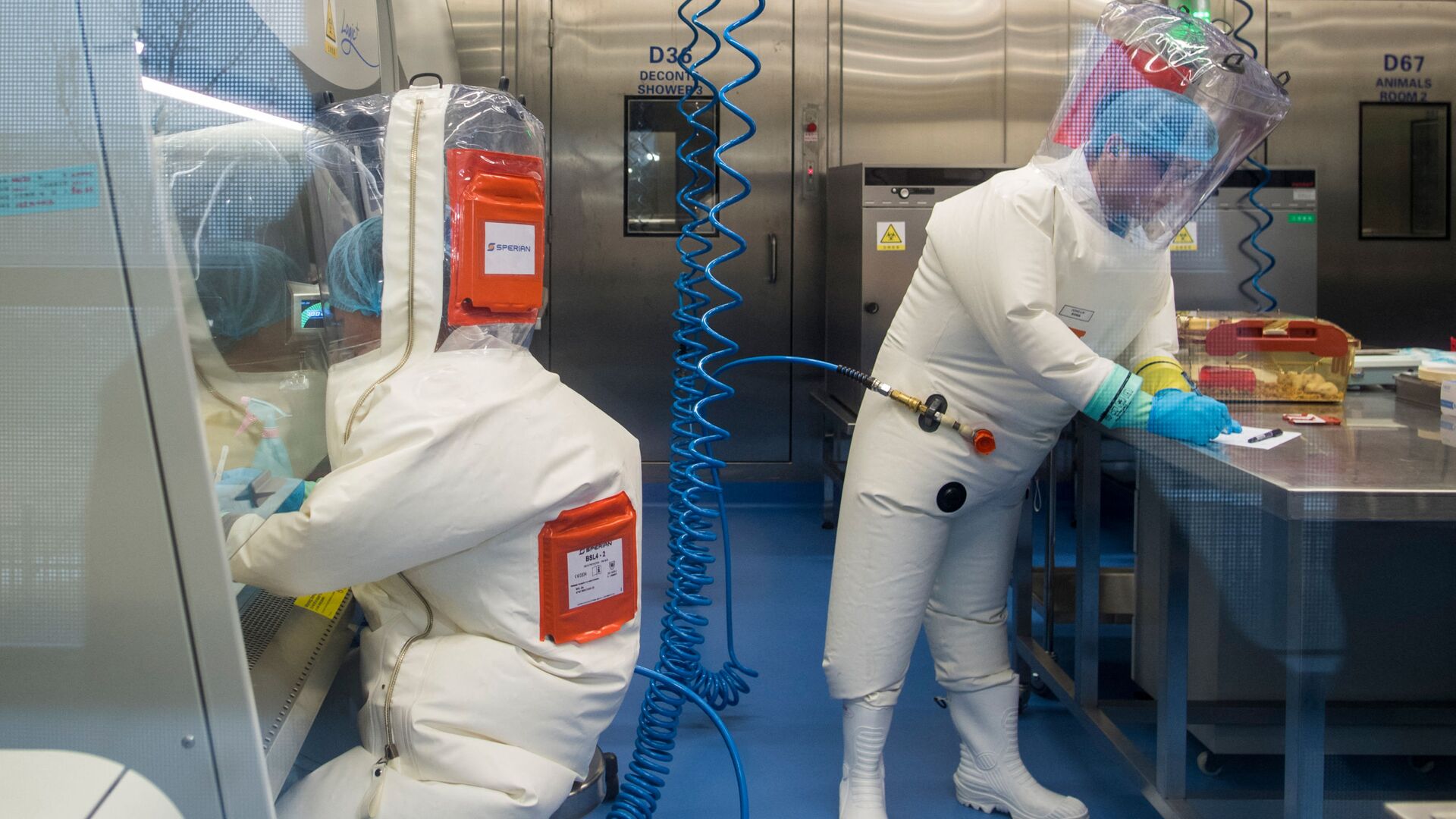https://sputnikglobe.com/20220127/chinas-scientists-warn-of-potential-high-fatality-transmission-rate-of-coronavirus-neocov--1092550863.html
China's Scientists Warn of Potential ‘High Fatality, Transmission Rate’ of Coronavirus NeoCoV
China's Scientists Warn of Potential ‘High Fatality, Transmission Rate’ of Coronavirus NeoCoV
Sputnik International
The NeoCoV virus discovered in South Africa and currently actively discussed in media reports is not new and has been around for some time. The virus is... 27.01.2022, Sputnik International
2022-01-27T10:37+0000
2022-01-27T10:37+0000
2022-01-27T10:37+0000
bat
wuhan
covid-19
middle east respiratory syndrome (mers)
https://cdn1.img.sputnikglobe.com/img/07e5/06/04/1083073303_0:177:3015:1873_1920x0_80_0_0_b15e27e9a163d0049e8db8388e86cd34.jpg
Chinese scientists have warned of the potential threat of high fatality and transmission rate linked with a strain of coronavirus discovered in South Africa. The NeoCoV virus, related to the Middle East respiratory syndrome MERS-CoV, linked with outbreaks in countries of the Middle East in 2012 and 2015, is not new. It is also similar in many ways to SARS-CoV-2, which causes COVID-19 in humans. NeoCoV was found in a population of bats in South Africa and to date has spread exclusively among these animals. Yet the new study, not yet peer-reviewed and released in preprint on the bioRxiv website, unexpectedly discovered that NeoCoV and its close relative, PDF-2180-CoV, can use some types of bat Angiotensin-converting enzyme 2 (ACE2) and human ACE2 for entry. Just one mutation is enough for the virus to be able to infiltrate human cells, claim scientists from the Wuhan University and Institute of Biophysics of the Chinese Academy of Sciences. Based on their findings, the potential danger linked to the new coronavirus is that it binds to the ACE2 receptor in a different way than the COVID-19 pathogen does. Therefore, neither antibodies nor protein molecules that are formed in those who have been ill with the respiratory disease or/and vaccinated against SARS-CoV-2 will successfully protect against it. Thus, NeoCoV carries with it the potentially combined high mortality rate of MERS-CoV (where one in three infected people die on average) and the high transmission rate of the current SARS-CoV-2 coronavirus, wrote the Chinese researchers. Experts from the Vector Russian State Research Centre of Virology and Biotechnology issued a statement on Thursday after being briefed about NeoCov, in response to the publication."Experts from the Vector research centre are aware of the data that Chinese researchers obtained regarding the NeoCov coronavirus. At this time, it’s not about the emergence of a new coronavirus capable of actively spreading among humans." They added that the Chinese team had outlined potential risks requiring further study. The COVID-19 pandemic engulfing the world originated in Wuhan, China, in December 2019. There is no definitive proof as to how the pandemic emerged. Currently, there exist two versions on the issue. The first suggests that COVID-19 was transmitted to humans from bats through an intermediate animal. The second explains the outbreak by a leak from a laboratory. In spring 2021, the World Health Organization (WHO) issued its full report on the coronavirus origin, stating that the lab leak theory was unlikely. On 29 October 2021, US intelligence released a declassified report on its investigation into the origins of the novel coronavirus, which found that the virus had not been developed as a biological weapon. America's top intelligence agencies remained "divided on the most likely origin." However, the report also accused Beijing of allegedly hindering the global investigation and resisting sharing information. In response, the Chinese Foreign Ministry slammed the US “so-called unclassified summary of assessment on COVID-19 origins” as a political and false one, with no scientific basis or credibility.
https://sputnikglobe.com/20220112/us-senators-introduce-bill-to-sanction-china-officials-obstructing-covid-19-origins-probe-1092192088.html
wuhan
Sputnik International
feedback@sputniknews.com
+74956456601
MIA „Rossiya Segodnya“
2022
News
en_EN
Sputnik International
feedback@sputniknews.com
+74956456601
MIA „Rossiya Segodnya“
Sputnik International
feedback@sputniknews.com
+74956456601
MIA „Rossiya Segodnya“
bat, wuhan, covid-19, middle east respiratory syndrome (mers)
bat, wuhan, covid-19, middle east respiratory syndrome (mers)
China's Scientists Warn of Potential ‘High Fatality, Transmission Rate’ of Coronavirus NeoCoV
The NeoCoV virus discovered in South Africa and currently actively discussed in media reports is not new and has been around for some time. The virus is related to the Middle East respiratory syndrome MERS-CoV, outbreaks of which were recorded in 2012 and 2015.
Chinese scientists have warned of the potential threat of high fatality and transmission rate linked with a strain of
coronavirus discovered in South Africa.
The NeoCoV virus, related to the Middle East respiratory syndrome MERS-CoV, linked with outbreaks in countries of the Middle East in 2012 and 2015, is not new. It is also similar in many ways to SARS-CoV-2, which causes COVID-19 in humans.
NeoCoV was found in a population of bats in South Africa and to date has spread exclusively among these animals. Yet the
new study, not yet peer-reviewed and released in preprint on the bioRxiv website, unexpectedly discovered that NeoCoV and its close relative, PDF-2180-CoV, can use some types of bat Angiotensin-converting enzyme 2 (ACE2) and human ACE2 for entry.
Just one mutation is enough for the virus to be able to infiltrate human cells, claim scientists from the Wuhan University and Institute of Biophysics of the Chinese Academy of Sciences.
Based on their findings, the potential danger linked to the new coronavirus is that it binds to the ACE2 receptor in a different way than the COVID-19 pathogen does. Therefore, neither antibodies nor protein molecules that are formed in those who have been ill with the respiratory disease or/and vaccinated against SARS-CoV-2 will successfully protect against it.
Thus, NeoCoV carries with it the potentially combined high mortality rate of MERS-CoV (where one in three infected people die on average) and the high transmission rate of the current SARS-CoV-2 coronavirus, wrote the Chinese researchers.
Experts from the Vector Russian State Research Centre of Virology and Biotechnology issued a statement on Thursday after being briefed about NeoCov, in response to the publication.
"Experts from the Vector research centre are aware of the data that Chinese researchers obtained regarding the NeoCov coronavirus. At this time, it’s not about the emergence of a new coronavirus capable of actively spreading among humans." They added that the Chinese team had outlined potential risks requiring further study.

12 January 2022, 03:31 GMT
The COVID-19
pandemic engulfing the world originated in Wuhan, China, in December 2019. There is no definitive proof as to how the pandemic emerged. Currently, there exist two versions on the issue. The first suggests that COVID-19 was transmitted to humans from bats through an intermediate animal. The second explains the outbreak by a leak from a laboratory.
In spring 2021, the World Health Organization (WHO) issued its full report on the coronavirus origin, stating that the lab leak theory was unlikely. On 29 October 2021, US intelligence released a declassified report on its investigation into the origins of the novel coronavirus, which found that the virus had not been developed as a biological weapon.
America's top intelligence agencies remained "divided on the most likely origin." However, the report also accused Beijing of allegedly hindering the global investigation and resisting sharing information.
In response, the Chinese Foreign Ministry
slammed the US “so-called unclassified summary of assessment on COVID-19 origins” as a political and false one, with no scientific basis or credibility.




